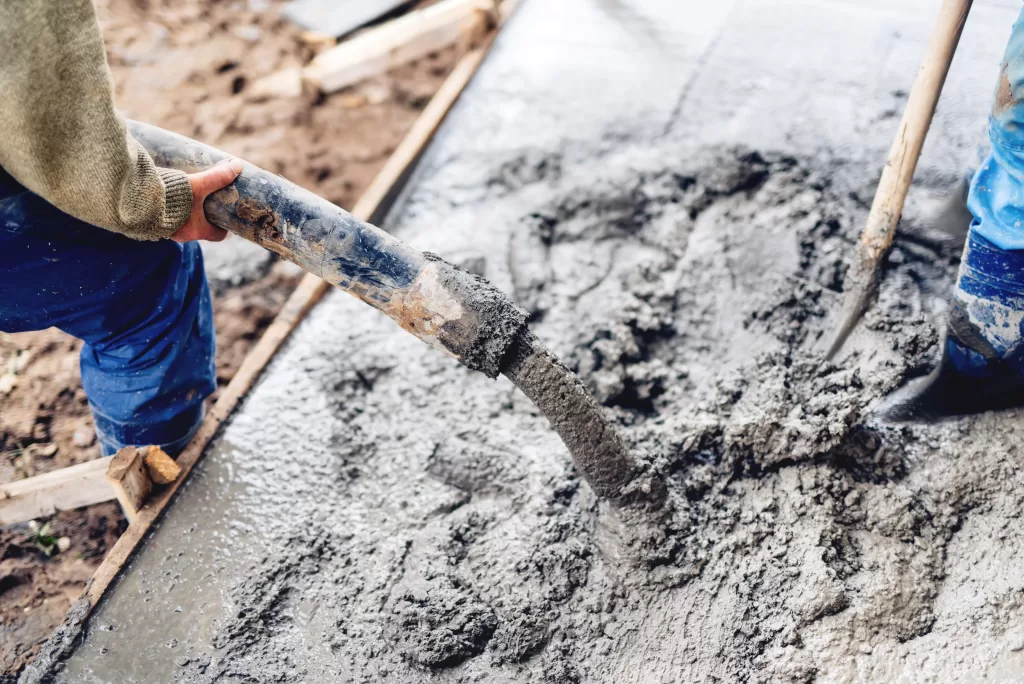Expansion joints play an important role in the construction and maintenance of concrete structures. They serve as strategic points, accommodating the natural expansion and contraction of concrete due to temperature changes, moisture variations, and other factors. So, continue reading to learn more about expansion joints in concrete construction.
What is the Purpose of an Expansion Joint?
Concrete, being weak in tension, lacks the ability to bend or stretch without risking structural failure. However, it undergoes movement during expansion and shrinkage. This causes slight shifts in structural elements. To avoid the potentially harmful consequences of such movement, various expansion joints are integrated into concrete constructions. They span from foundations and walls to roof expansion joints and paving slabs.
These joints require meticulous planning, precise placement, and careful installation. In instances where a slab extends continuously across surfaces exceeding a single face, the implementation of an expansion joint helps reduce stress.
Benefits of Expansion Joints
Expansion joints are essential features in concrete structures. Here’s how they are beneficial:
Movement Accommodation:
Expansion joints allow concrete to expand and contract in response to temperature changes, moisture variations, and loading conditions. This way, they prevent cracking or damage.
Stress Reduction:
Expansion joints in construction act as controlled points of movement. They help to reduce internal stresses within the concrete. As a result, they minimise the risk of cracks, buckling, or other forms of structural damage.
Isolation of Sections:
Expansion joints isolate different sections of concrete. This prevents the transfer of stresses between adjacent components. Such prevention is particularly important in large structures where differential movement may occur.
Durability and Longevity:
An expansion joint facilitates controlled movement and stress relief. It contributes to the structural integrity and longevity of concrete infrastructure. This ensures optimal functionality over time.
Types of Expansion Joints
Depending on the location, expansion joints can be categorised as follows:
Bridge Expansion Joints
Such expansion joints are installed on bridges. They accommodate the movement of the bridge deck caused by temperature fluctuations, traffic loads, and other factors. They also facilitate the smooth expansion and contraction of the bridge deck while maintaining structural integrity and rideability.
Masonry Expansion Joints
A masonry expansion joint is a flexible gap or space intentionally left between masonry elements. These include clay bricks or blocks. It helps prevent cracking, buckling, or other forms of damage by allowing the masonry to expand and contract without compromising structural integrity.
Railway Expansion Joints
In most cases, expansion joints are not provided in railway tracks. However, if the track is positioned on a bridge with an expansion joint, placing an expansion joint in the track becomes necessary. It helps prevent the expansion of the base concrete structure.
Pipe Expansion Joints
Pipe expansion joints pass high-temperature substances, like exhaust gases or steam. They are also useful for absorbing movement and vibration. Depending on the kind of material used to make the joint, such expansion joints can be further categorised as follows:
-
- Fabric expansion joints
-
- Rubber expansion joints
-
- Universal expansion joints
-
- Metal expansion joints
-
- Toroidal expansion joints
-
- Gimbal expansion joints
How are Expansion Joints Installed?
The process of expansion joint placement in concrete usually involves the following steps:
Planning and Design
Before installation, careful planning and design are essential. Engineers determine the location, spacing, and type of expansion joints. This is done based on factors like temperature fluctuations, anticipated movement, and structural requirements.
Preparation
The area where the expansion joint will be installed is prepared by cleaning and clearing debris. Doing so ensures a clean and stable surface for installation.
Placement
Expansion joint materials are positioned according to the design specifications. These include prefabricated joint assemblies or joint filler materials. Such materials may also include rubber, neoprene, polyethene foam, or other flexible materials capable of accommodating movement.
Sealing
If using prefabricated joint assemblies, they are usually anchored into place and sealed with adhesive or fasteners. Alternatively, if using joint filler materials, they are inserted into the gap between concrete sections. They are then secured in place using adhesive or mechanical fasteners.
Finishing Touches
Once the expansion joint is installed and secured, any excess material is trimmed. The surface is finished for a smooth transition between concrete sections.
Maintenance
Regular inspection and maintenance of expansion joints are crucial to ensure their effectiveness over time. This may involve monitoring for signs of wear, damage, or deterioration or repairing or replacing the joint materials as needed for proper function
Build structures that guarantee strength and durability. Choose a reliable construction company in India, like JK Cement. Explore a wide range of high-quality house construction cement and more.
FAQs
What is an expansion joint in concrete?
Expansion joints are deliberate gaps in concrete structures. They are designed to accommodate movement caused by factors like temperature changes, moisture variations, and loading conditions.
What is the difference between isolation joints and expansion joints?
Isolation joints separate different concrete sections to prevent stress transfer. Expansion joints accommodate concrete movement due to temperature changes. Isolation joints isolate, while expansion joints allow controlled movement.
Can expansion joints be installed in existing concrete structures?
Yes, expansion joints can be installed into existing concrete structures. This can be done by cutting and removing sections of concrete. Then, the expansion joint materials can be installed according to design specifications.
How wide should expansion joints be?
Expansion joint width varies depending on factors such as the type of structure, anticipated movement, and material properties. In most cases, widths range from 1/4 inch to 1 inch in concrete constructions.
Can expansion joints be filled with any material?
Expansion joints can be filled with various materials, like elastomeric sealants, silicone, or flexible foam. These materials are chosen for their ability to accommodate movement and provide long-lasting sealing properties.
How long do expansion joints last?
The lifespan of expansion joints depends on factors like material quality, environmental conditions, and maintenance. Well-installed and maintained expansion joints can last for decades. However, others may require replacement sooner.














